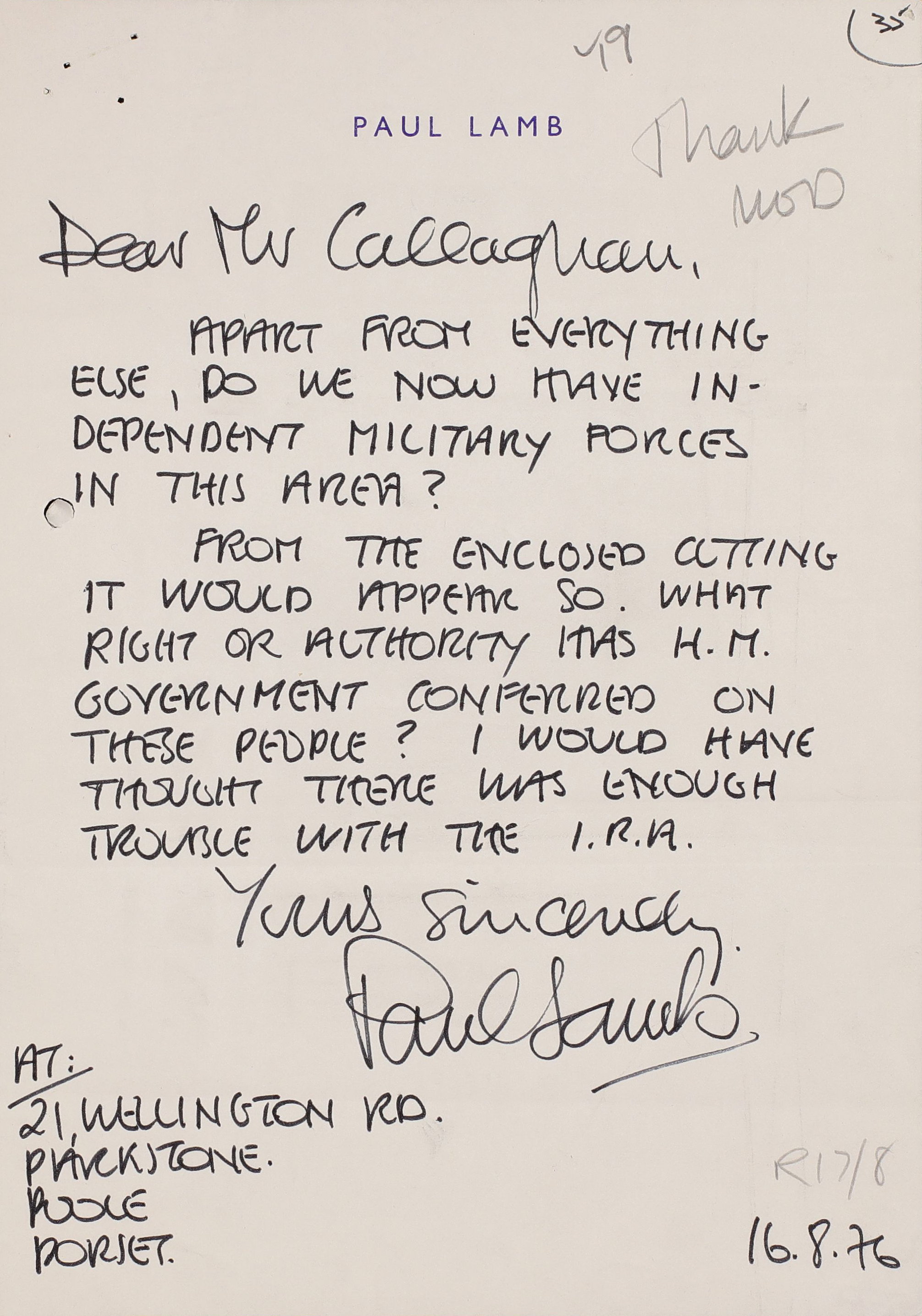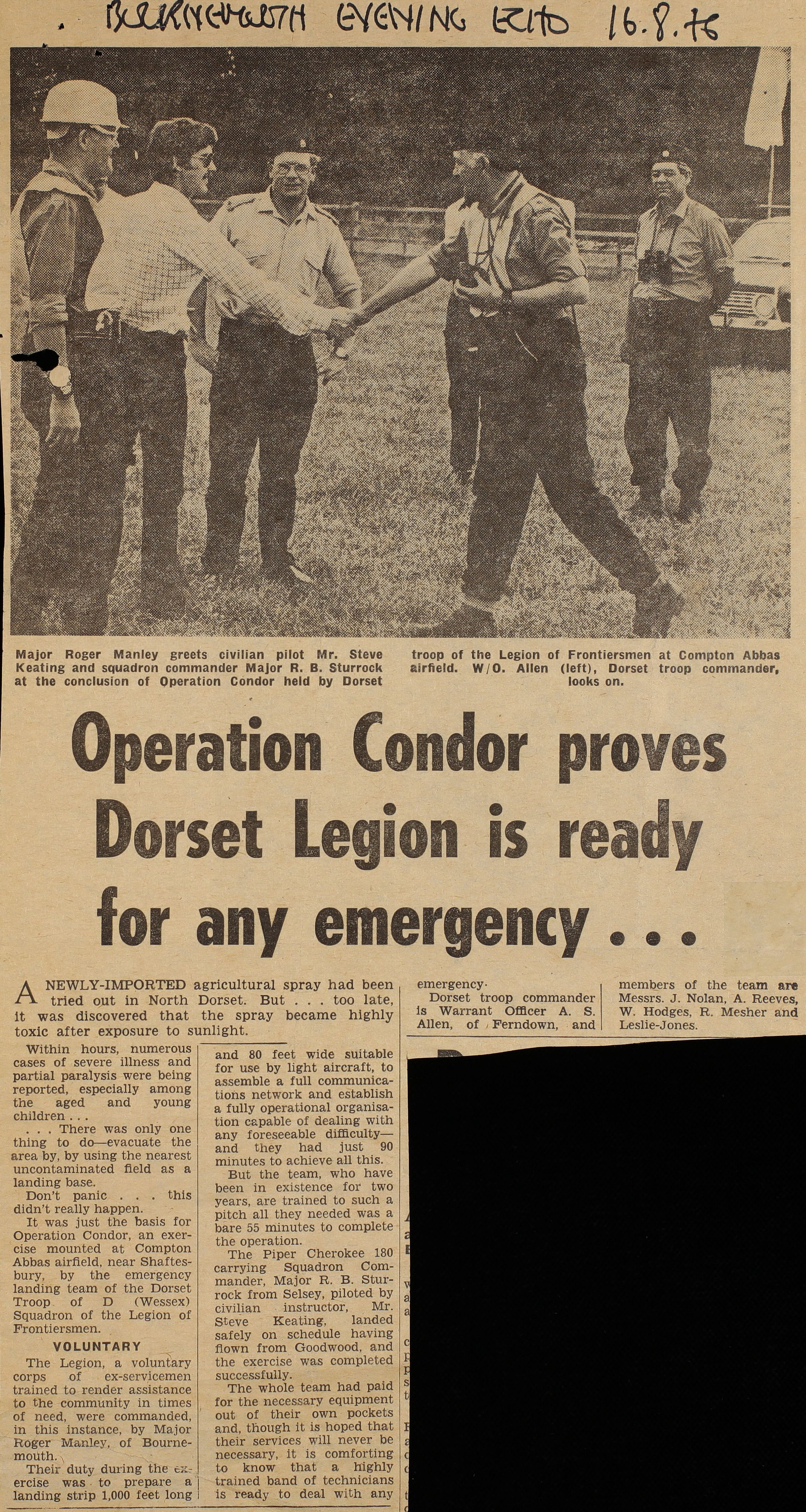
Our latest “Document of the Week” was chosen by our Senior Editor, Dr Tommy Dolan. It is a letter received in August 1976 by the British Prime Minister, James Callaghan. Written by Paul Lamb of Poole, Dorset, the letter expressed concerns about the rise of “independent military forces”.
Lamb had enclosed a newspaper cutting from the Bournemouth Echo. This described “Operation Condor”, conducted by the Dorset Troop of D (Wessex) Squadron of The Legion of Frontiersmen, a voluntary body of ex-servicemen. The Legion, according to the article, sought to “render assistance to the community in times of need”. Commanded by Major Robert Manley, “Condor” simulated the response to a nightmarish scenario: newly imported agricultural spray had been deployed, spray that, unbeknownst to anyone, became toxic when exposed to sunlight, inducing severe illness, even paralysis. The aim of “Condor”: to assemble a landing strip for light aircraft, as well as “a full communications network and [. . .] a fully operational organisation capable of dealing with any foreseeable difficulty”, all in 90 minutes. Apparently, this feat was accomplished within half of the allotted time.

Impressive and well-intentioned as this exercise in voluntary civil defence may have been, Lamb was nevertheless unnerved. “What right or authority has H.M. government conferred on these people?”, as he put it in his letter. Intriguingly, what worried him was the way in which the organisation behind “Condor” bore a disturbing resemblance, however slight, to paramilitary organisations in Northern Ireland. “I would have thought”, as he wrote, “there was enough trouble with the I.R.A [Irish Republican Army]”.
The Home Office file, titled “Private Armies in Great Britain”, in which this letter resides, contains many others to the government. These likewise questioned the existence, capabilities, and aims of voluntary civil defence groups, especially those exhibiting a militaristic ethos, like the Legion, in light of “the Troubles” in Northern Ireland. Whilst Lamb compared the thoroughly patriotic Legion to the I.R.A, a paramilitary organisation that, of course, opposed the British state, others drew attention to the subversive potential of zealously “loyal” voluntary defence bodies, not least because a loyalist umbrella organisation, the Ulster Workers’ Council, had instigated a widespread and politically consequential industrial stoppage in Northern Ireland in May 1974. What if, some people asked, voluntary defence bodies in Britain, perhaps infiltrated by communists, provoked industrial action on a similar scale? Others feared the constitutional fallout of a situation whereby their government turned to voluntary defence forces in order to break strikes.
What is therefore so interesting about this file, is the way in which it illustrates the interaction between, at first glance, seemingly unrelated historical trends—the resurgence of paramilitarism in Northern Ireland during “the Troubles”, and the proliferation of voluntary civil defence bodies in Britain amidst the Cold War. As evidenced by Paul Lamb’s letter to the Prime Minister, this interaction generated a fair bit of unease throughout British society.
Where to find this document
The Home Office file, “HO 322/597: Private Armies in Great Britain”, can be found in our primary source collection, Britain Under Threat: Civil Defence in the Era of Total War, 1914–1989.
Comprising over 100,000 images drawn from files at The National Archives (UK), this collection explores various aspects of British civil defence throughout the twentieth century. As civilians became increasingly vulnerable to enemy action in this period, thanks to developments in technology and strategy, the British government was forced to take innovative and wide-ranging action to keep people safe. Visit the collection page to learn more.
